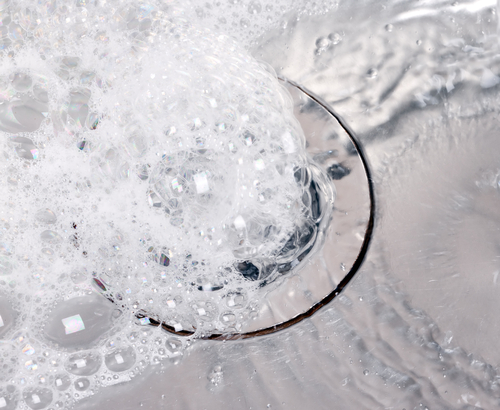Bicarbonate of Soda for Cleaning Drains: Does this Really Work?
A common piece of received wisdom is that you can use bicarbonate of soda for cleaning drains and removing blockages, and many people still believe this in the internet age. The experts at Lanes are here to explain why this doesn’t work (and can actually make problems worse), and what you should do instead to prevent or remove blockages.
To start with, instructions about how to effectively use bicarbonate of soda to clean drains are very inconsistent and vary largely depending on the source you use. This alone should indicate to those with blocked drains that a bicarbonate of soda mixture is not the most effective method to use.
Some sources say that you should mix bicarbonate of soda with vinegar, while others suggest hot water, but neither of these methods is really effective. Bicarbonate of soda is slightly alkaline, which means in theory that it can neutralise the slightly acidic fat, oil and grease (FOG) that comprise most blockages. Vinegar, on the other hand, is also slightly acidic, and combining it with bicarbonate of soda will neutralise the two, rendering them unable to affect a blockage at all.
Does bicarbonate of soda and water work on blockages?
As mentioned above, the combination of bicarbonate of soda and water is effective in theory, but it is unlikely to work in practice. So why is that? In fact, there are many reasons why this mixture is not an effective solution to blockages and other household drainage problems, and below we will explain these challenges and detail other ways that you can deal with blocked drains, foul smells or other problems.
One problem is that it is very easy to accidentally wash your bicarbonate of soda mixture down the sink, in which case it will not affect the blockage at all. It is difficult to create exactly as much of the mixture as you need without pouring too much into your drain, which could cause more serious problems to arise later.
The combination of bicarbonate of soda and water can actually stick to the pipes if the balance of the mixture isn’t right, and cause further blockages if you are not careful in how you administer it. Coupled with the fact that it is not very effective at breaking down blockages, this is a good reason to avoid it altogether.
Even in cases where the mixture is able to break down a FOG-based blockage, it is not a surfactant – a substance that reduces the surface tension between a liquid and a solid and enables them to merge together – and therefore will not be effective at carrying away these materials after the blockage has broken down. Possible results of using this mixture could be that FOG gets washed further into the drainage system, and this can cause serious complications later down the line.
How should I clear a blockage from my drains?
It is never advisable to pour something into your drains to clear a blockage, as this will very frequently add to the problem rather than solving it. By washing FOG into the drain rather than removing it altogether, you can create problems like blockages further inside the drainage system, which can be much more difficult to tackle, such as fatbergs – blockages that can form in sewer systems and cause serious disruption. These can be enormous, with the largest ever discovered being over 250m in length and weighing up to 130 tonnes, and are extremely expensive and time-consuming to remove, so it is best to avoid any behaviours that can contribute towards the formation and growth of fatbergs.
Instead, you should hire a drainage professional to clear a blockage. They can use tools to remove the blockage that will not damage your pipes, and ensure that all material causing the blockage – whether FOG, food scraps, hair or other materials – is removed and disposed of effectively. This prevents the problem of further blockages arising and can help to keep your drains in the best possible condition.
If you need domestic drain unblocking services, you can contact Lanes Group 24/7 by calling 0800 526 488. Alternatively, you can fill in the online enquiry form on this page to arrange a call back.








